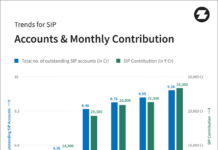Contributed By Utkarsh Gupta, Managing Director, Ramagya Mart
India ranks ‘fifth’ globally in the retail space. It has the ‘third’ largest online shopper base of 140 million, after China and the US. According to Walmart CEO, Doug McMillon India’s retail market will grow up to $1 trillion by 2025. India ranks 63 in the World Bank’s Doing Business, and 73 in the United Nations Conference on Trade & Development’s B2C E-commerce Index 2019.
Be it electronics, fashion, lifestyle, beauty, furniture, healthcare or education; innovations, greater and easier availability of internet services & greater smartphone penetration to even the remotest corners of the country have caused
e-commerce platforms to flourish in India for all these sectors.
E-retail has been a blessing during the pandemic to the Indian customers as it allows comparison shopping, allowing them to view and compare numerous products from various sites at one go. Easy placing of orders and convenient & rapid delivery- anytime, anywhere are key causes of how e-commerce is transforming the retail market space. Other advantages such as options of ordering in bulk or any desired quantity, easy exchange and return policies as well as discounts, loyalty and reward programs for customers have rendered to the expansion of this sector.
The retail sector in India contributes 10% to the GDP and accounts for 8% of the employment sector. The contribution of e-commerce to all of retail is still meagre, about 2 to 3%, but according to NASSCOM’s data, India’s e- marketplace continues to grow at a galloping pace of 5% per year, despite the Covid -19 pandemic & other hurdles. Growth in digital literacy, urbanization, nuclear families and changes in consumption and lifestyle patterns has led to a higher influx in investment in
this sector.
Initiatives like Start-up India, Make In India, Skill India, Digital India and Innovation Fund are outstanding government schemes that have contributed greatly to the e-commerce industry in India. The National Retail Policy has increased the ease of doing business by rationalising the licensing process and focusing remarkably on reforms. Schemes like Digital India have digitized the retail market, and amalgamating this with Bharat Interface for Money (BHIM) has nothing but revolutionised
retail shopping in India.
Innovations in the finance sector &FinTech, & collective efforts of banks & financial houses along with retailers have also impacted the e-commerce platforms tremendously. Increases in investment have occurred due to a large number of foreign retailers entering the Indian retail market. The FMCG (fast-moving consumer goods) industry that has recorded considerable macroeconomic growth to become the 4th largest sector in the Indian economy, has also contributed to the growth of e-retail in the country.
With the ever-increasing requirement of consumer products by different sectors including majorly electronics and home appliances, many companies have invested in the Indian retail space. Wholesale business in India has been transformed by bringing together & connecting manufacturers, retailers, dealers, wholesalers and distributors from the Indian market, globally.
E-commerce has contributed greatly to the retail sector by creating new job opportunities, thereby providing an impetus to economic growth. It has had a positive impact on MSMEs (micro, small & medium enterprises) due to factors such as easy digital payments, hyper-local logistics, analytics-driven customer engagement & digital advertisements.
The sector has boosted employment, increased revenues, heightened collection of taxes & in general have offered better products and services to customers. It is estimated that the e-retail sector in India is going to grow by 25-26% in the
next five years, rising to about $120-140 million by 2026. As a result, it is likely that by 2030, rural per capita consumption will grow 4 times, as compared to 3.5 times in urban areas.



































